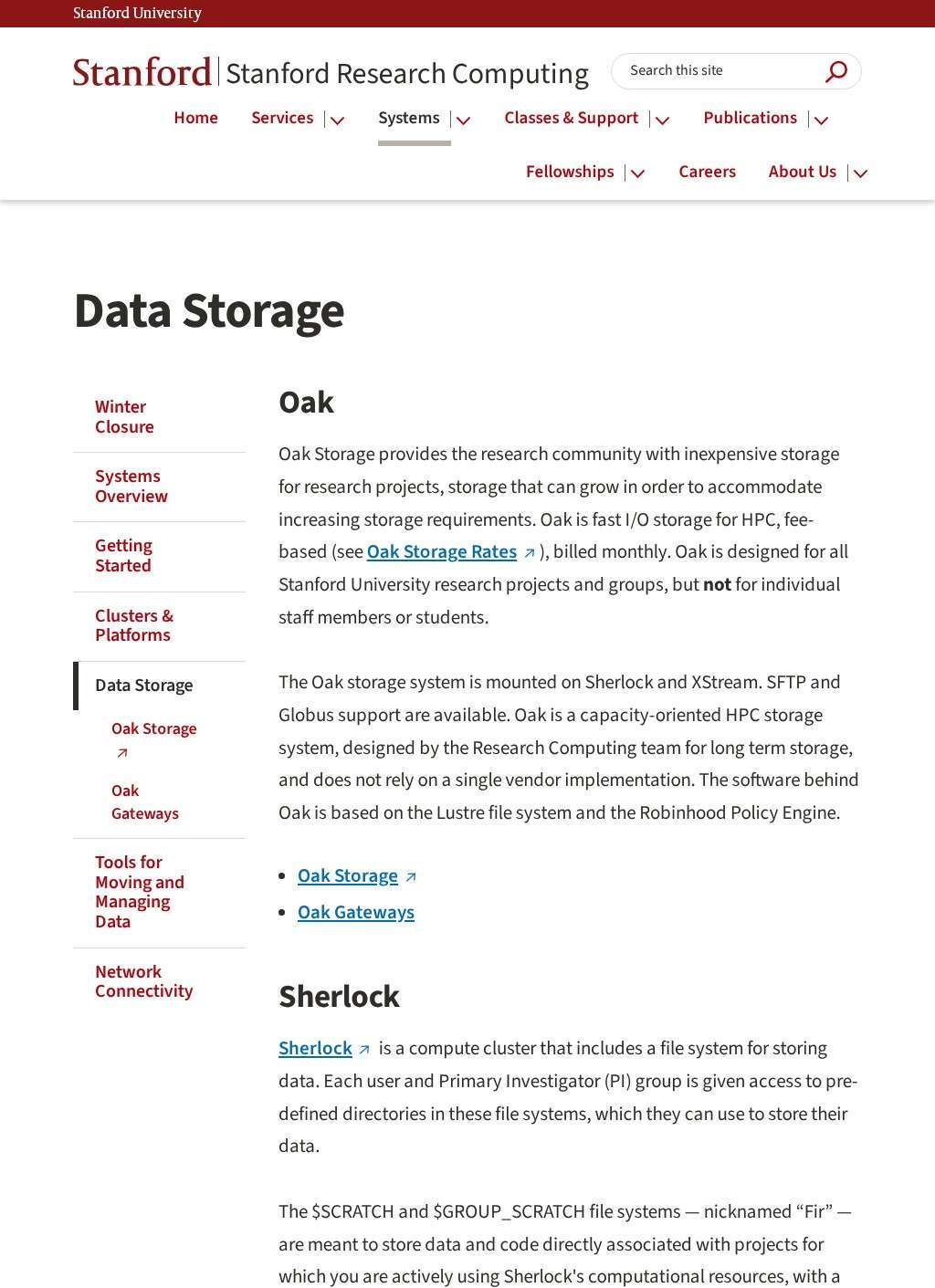Stanford Research Computing represents one of the most sophisticated academic data storage environments in higher education, serving as both a practical resource for researchers and a model for university computing infrastructure. The center manages multiple storage systems designed to handle everything from individual research projects to large-scale collaborative studies requiring petabytes of data capacity.
The Oak Storage system forms the centerpiece of Stanford's research storage offerings. This high-performance computing storage solution provides researchers with cost-effective, scalable storage that starts at 10TB increments and can expand to meet growing research demands. Oak runs on the Lustre file system combined with the Robinhood Policy Engine, creating a capacity-oriented storage architecture that doesn't rely on single-vendor implementations.
Stanford's storage infrastructure includes specialized file systems for different research needs. The Sherlock cluster provides both personal and group scratch space with the "Fir" file system, allowing 100TB per person and group for active computational projects. This scratch storage includes built-in data lifecycle management with 90-day retention periods for unchanged files, encouraging researchers to use appropriate storage tiers for different types of data.
The university's approach to storage pricing reflects academic budget realities while maintaining professional-grade service levels. Oak storage costs $45 per month for 10TB or $612 for 250TB allocations, with additional services like backup management and gateway access available separately. This pricing structure allows research groups to predict storage costs and scale their infrastructure as projects evolve.
Stanford integrates its storage systems with computational resources and data transfer tools. Oak storage connects to both Sherlock and XStream clusters, while supporting SFTP and Globus transfer protocols for data movement. The center provides dedicated data transfer nodes that accept various connection types including scp, sftp, rsync, and bbcp for efficient data migration.
Beyond pure storage capacity, Stanford emphasizes data management education and support services. The Research Computing team helps researchers develop appropriate data storage strategies, understand retention policies, and choose between different storage options based on access patterns and budget constraints. This educational component helps researchers make informed decisions about long-term data preservation and access planning.
